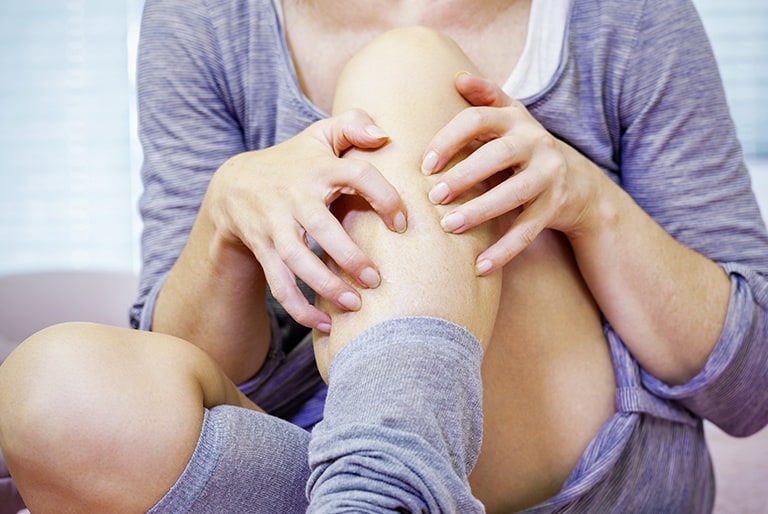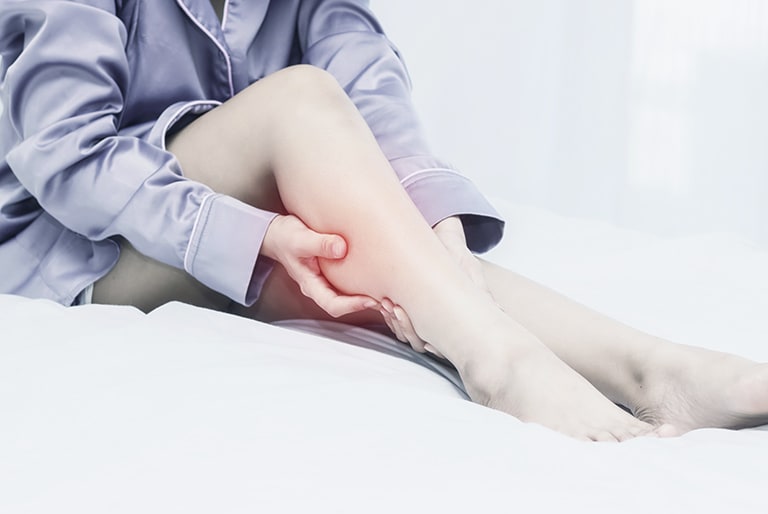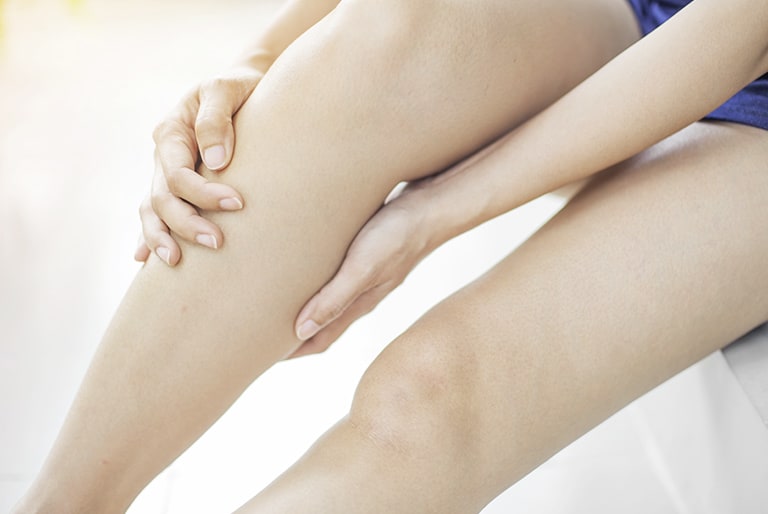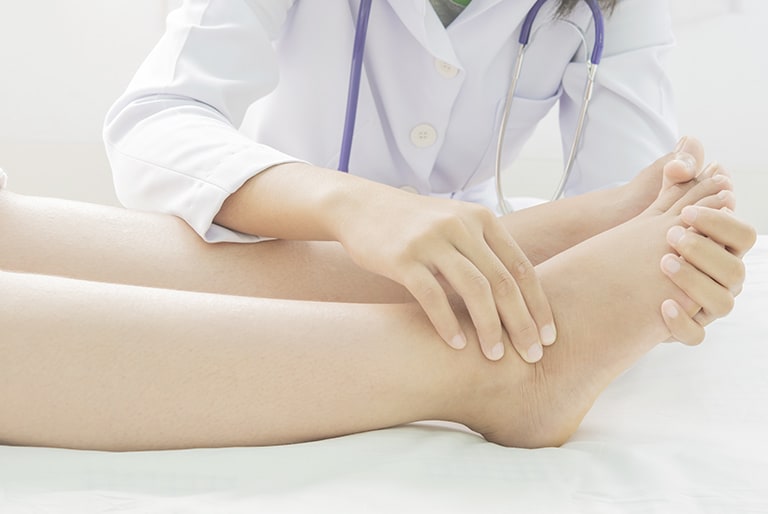Itchy legs
Your skin is dry and flaky and you just want to scratch it to stop the itching. The cause of itchy legs can simply be very dry skin. Sometimes the root cause can be venous insufficiency, which can have unpleasant consequences.

Why do my legs itch?
Itching on your legs, which is medically referred to as pruritus, can have different causes. Sometimes your skin is simply too dry and tight. Your skin dries out during the day in the cold months because of the dry air from heating and it begins to itch. Sometimes it could be neurodermatitis or psoriasis. An allergy caused by a shower gel, a cream or a washing powder also manifests as an annoying itching and skin rash. Disease of the organs or metabolic disorders such as diabetes mellitus cause similar symptoms.Sometimes itchy legs are cause by chronic venous insufficiency. That leads to a build-up of blood in your legs, quite often because your venous valves do not work properly. This creates stasis dermatitis, which should be treated long-term. Other diseases of the veins can cause itching, such as varicose veins, and they require immediate medical attention because there is an increased risk of thrombosis.
What is stasis dermatitis?
As it progresses, it often forms stasis dermatitis on the lower leg. Alongside the unpleasant itching, the skin inflammation leads to other symptoms.
- Dandruff
- Reddening of the skin
- Changes in skin pigmentation, brownish discolouration
- Wetness
- Crust formation
- Swelling
Occasionally ulcers can form, which heal poorly. The result can be an open leg, which must be treated immediately.
How do you treat stasis dermatitis?
The therapy for stasis dermatitis is primarily targeted at the alleviation of the symptoms, but also addresses the cause. Because it is only when the venous insufficiency is treated that the itching can be permanently eliminated.
Your doctor can prescribe creams, ointments, zinc oxide pastes or compresses in order to alleviate the eczema, all of which are applied by the patient to the affected area. In severe cases, an additional bandage may be necessary in order to protect the wound. Medicines and antibiotics can support the therapy if the eczema is severely inflamed due to a bacterial infection. If ulcers do not heal after three months, a skin transplant could be the last resort, in order to close the ulcer.
It is necessary to put your feet up to treat venous insufficiency, as that supports the outflow of the fluids. In addition to that, compression stockings or bandages are an important part of the therapy.
What can I do against itchy legs?
The cause should be found in order to be able to treat itchiness correctly. If it is simply your skin which is dry, a rich cream could bring immediate relief. Your skin doctor can prescribe special medicines for other skin diseases, or recommend a therapy.
If your legs itch because your veins do not function properly and blood is building up, then the treatment concentrates on the root of the itching, namely on improving your blood flow. There are several possibilities for this:
- Movement: in order to dissolve the blockage of blood, you should take regular exercise, go for a stroll or do vein gymnastics. Also, avoid prolonged standing or sitting.
- Put your feet up: putting your feet up helps your blood flow back out of your legs towards your heart.
- Cooling: cold compresses and cooling gels or lotions relieve the itching and encourage circulation through your legs.
- Compression: as your veins do not work enough with insufficiency and cannot transport the blood out of your legs upwards towards your heart, the vein function has to be supported by compression stockings or compression bandages. They increase the pressure on your vessel walls from outside and improve the removal of the oxygen-poor blood.
- Medicines: medicines with the active ingredient Troxerutin, which is contained in Veno SL® 300, are well suited for preventing the accumulation of fluids and a build-up of blood in your legs. Troxerutin is extracted form a substance of the Japanese Pagoda Tree and improves the fluidity of your blood. At the same time, the walls of your vessels are reinforced and their function is supported.
Pay attention to the health of your veins from your early years onwards because preventive measures can slow down or even completely prevent diseases of the venous system.


